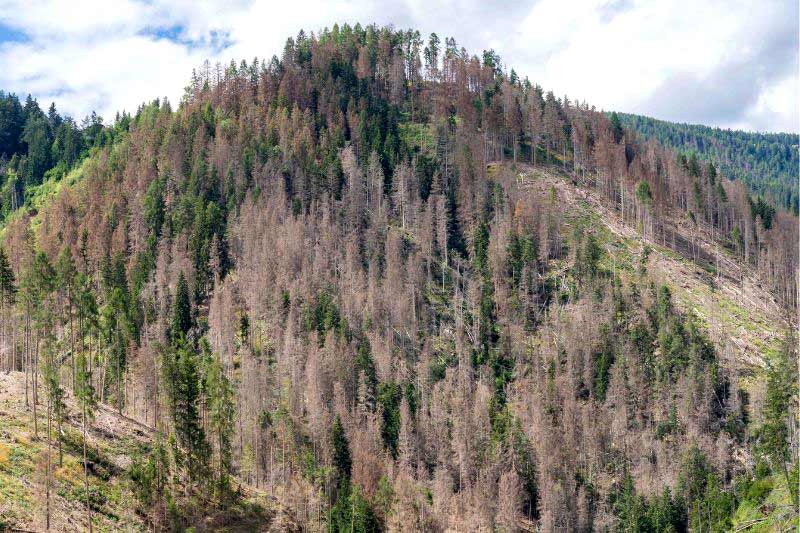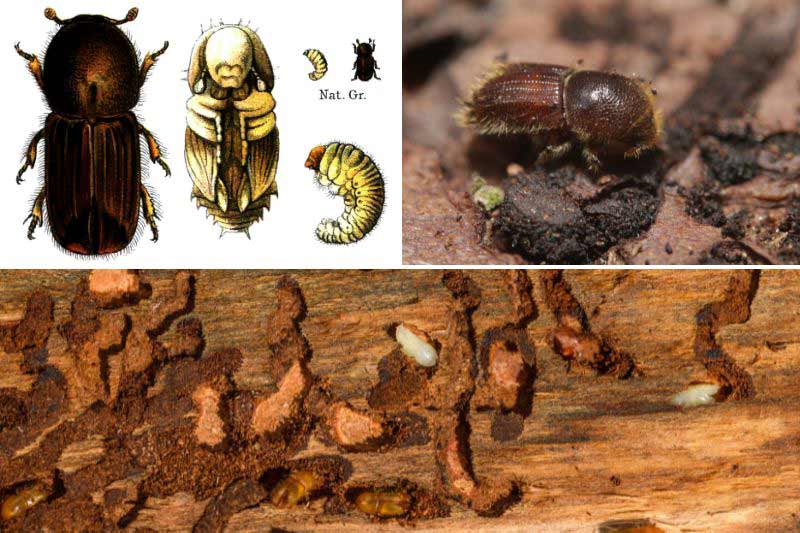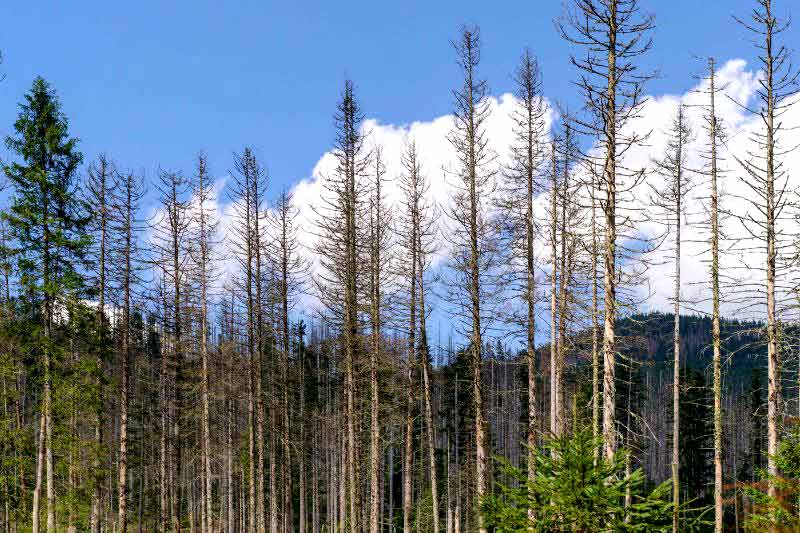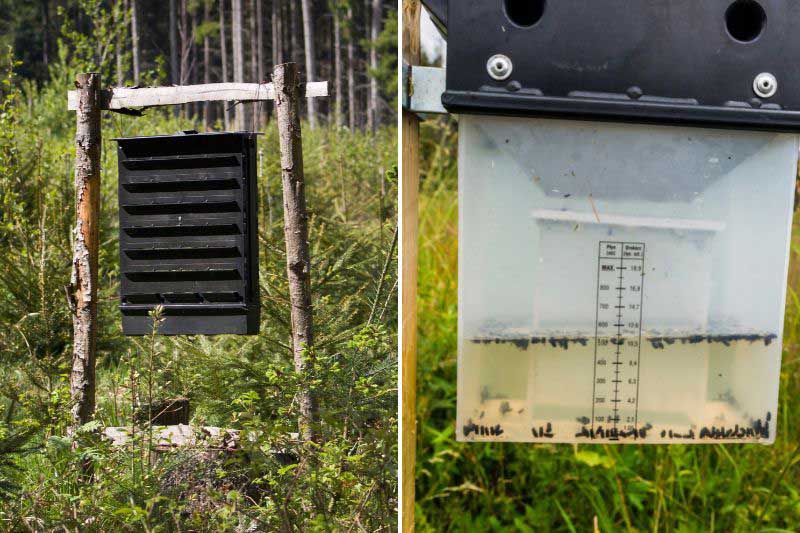This is a tiny insect that has been wreaking havoc across large areas of forests for several years... it is called the European bark beetle, known by its Latin name Ips typographus, and it is now spreading across almost all French spruce forests. Why and how does this pest challenge our forested areas, and what can we do to counter it? We explain everything.

First of all, what is the bark beetle?
Bark beetles or Ips typographus are tiny wood-eating insects (they feed on wood), measuring 2 to 7 mm in length, dark brown in colour, that primarily attack conifers, especially spruces; they bore a hole through the bark of trees and reproduce inside, in the soft layer known as cambium. The females then excavate larval galleries between the bark and the wood, lay their eggs, and the larvae feed on this part beneath the bark where the sap, rich in nutrients, circulates. If a large number of larvae develop within the tree (between 60,000 and 80,000 bark beetles and larvae can be counted per infected tree), all this tissue will be devoured and the tree will eventually die. They are also vectors of viral diseases and pathogenic fungi by boring their holes into the bark.
Bark beetles are found all around the globe, and some are linked to a particular tree species, but they are primarily pests for conifer forests, to the extent that they are now considered the worst pests of these forests worldwide.

When everything is functioning normally, bark beetles actually play a useful role in forest regeneration: they target weakened trees and create gaps that encourage the growth of young plants. They then accelerate the decomposition of dead wood, thus generating forest humus. In a healthy forest, trees can defend themselves with their resin, which typically "glues" the insects that bore into their bark, naturally regulating their spread.
However, rising temperatures, sequences of hot, dry summers and mild winters, accelerate the development of these insects: their reproduction is possible when temperatures exceed 15°C, and in the specific case of the European bark beetle, these insects have increased from one to three generations per year, which intensifies the pressure on increasingly weakened trees.
The state of bark beetle damage in France and Europe
In recent years, bark beetles have become one of the greatest threats to trees in French forests; these beetles began their damage in the forests of Grand Est, Burgundy, and Franche-Comté, French regions where spruce was primarily planted after the war to produce timber. Bark beetles were native there, but due to the conjunction of several phenomena, they have become serious enemies of the forests.
On one hand, climatic phenomena of heat and drought weaken trees even at altitude, but heat simultaneously promotes the development of these insects. Adding to this are forestry management errors that have encouraged monocultures, leading to the severe outbreak of bark beetles since 2020. In the spruce forests of the centre, particularly in Puy-de-Dôme, the epidemic began in 2021. Another species of bark beetle - known as the stenographer bark beetle - also attacks maritime pines in Gironde. An outbreak in the Landes forests weakened by the summer 2022 fires is to be feared.

All over Europe, the same phenomena of chronic bark beetle outbreaks are observed: extreme weather events such as storms that damage trees, their deficiencies due to impoverished soils, and droughts are both detrimental to trees and favourable to these insects. The damage is significant, especially in areas managed in monoculture. And other exotic bark beetles are knocking at our doors...
What are the solutions?
It is predicted that in 50 years, bark beetle colonies could produce at least 4 generations per year, which will not help matters... Curative control involves removing attacked trees to limit their development, but it requires significant effort and comes at a considerable cost.
Trapping adults using pheromone traps is employed, but this method proves costly and would require the installation of several traps per tree to be truly effective.
Preventive control involves adapting species to sites and climate, and especially diversifying forests by promoting species mixtures, to resist bark beetles as well as other pests. The fragmentation of forests by roads and clear-cutting increases edges, and it has been observed that spruces growing on these edges exhibit heightened sensitivity to water stress and bark beetles.
In short: more diversity and less pressure on forest environments are one of the solutions to bark beetle invasions, as well as to a multitude of other issues generated by climate problems.
































Comments